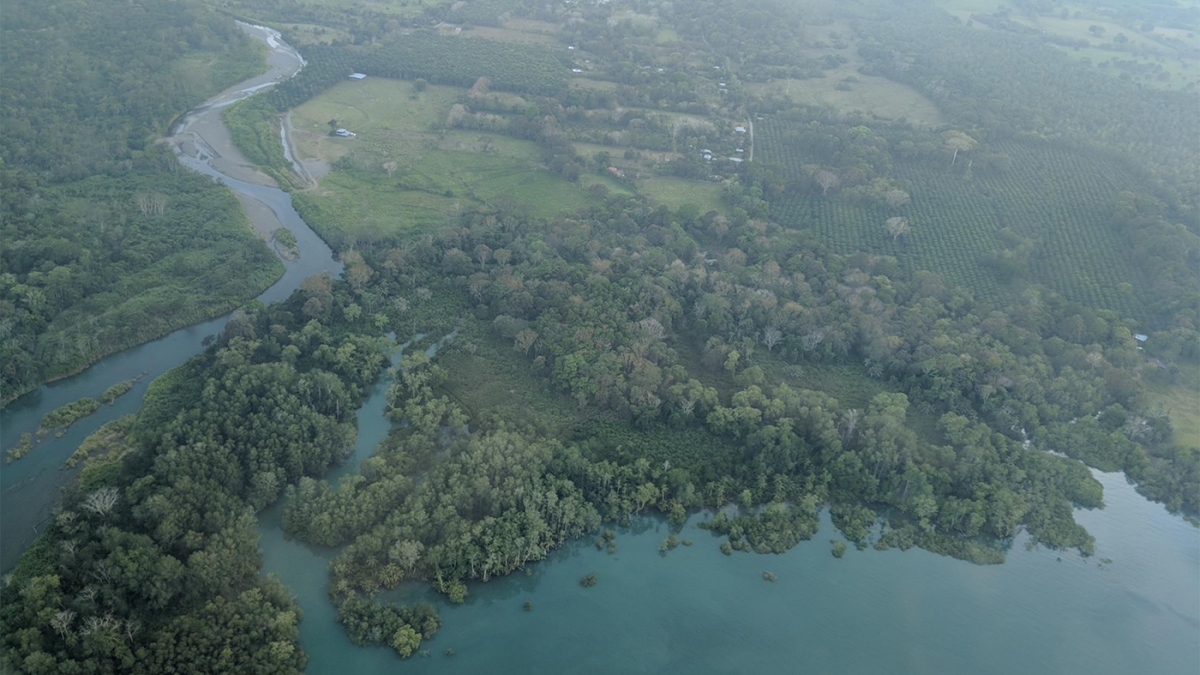Research shows cocaine trafficking adapts to law enforcement efforts

An alleged narco-trafficking node where cocaine enters by water, is warehoused and eventually passes to inland routes via the Pan-American Highway. Image courtesy of David Wrathall
The success of illegal drug trafficking through wider and wider swaths of Central America is a consequence of law enforcement activity to curtail it, according to new research published in the Proceedings of the National Academy of Sciences.
A model developed by Nicholas Magliocca from the University of Alabama and others from around the country, including Elizabeth Tellman, a PhD candidate from Arizona State University's School of Geographical Sciences and Urban Planning, found that the cat-and-mouse game of cocaine smuggling and government interdiction strategies results in a larger geographic area for trafficking with little success in stopping the drug from reaching the United States.
“This work demonstrates that supply-side counterdrug strategies alone are, at best, ineffective and, at worst, intensifying the trafficking problem,” said Magliocca, University of Alabama assistant professor of geography and lead author on the paper. “These networks have demonstrated their ability to adapt to interdiction efforts, identifying and exploiting new trafficking routes in response.”
Efforts by the United States to curtail illegal narcotics from getting into the country by smuggling routes through Central America over the past decades have been costly and ineffective. In response, traffickers adapt their routes and mode of transit, adjusting their networks to exploit new locations.
“We were surprised to find that we could realistically reproduce how drug trafficking organizations make decisions without ever talking to a drug trafficker directly,” said Tellman, co-author of the paper. “The model reveals that narco-trafficking is not ‘chaotic’ and the result of a random process — it is an ordered social process of decision-making in response to interdiction.”
As a result, the space drug traffickers use has spread from roughly 2 million square miles in 1996 to 7 million square miles in 2017.
Researchers used unclassified data sources that describe the volume and timing of cocaine flows throughout the Central American transit zones. The trafficking routes are not mapped or known, but many government, military and academic institutions have tried to infer route locations based on circumstantial evidence or classified intelligence.
The team developed a geographic agent-based model to investigate the decision-making processes of smugglers and the effects on cocaine trafficking networks as well as how the networks adapt to interdiction efforts.
“This model gives us the tools to look within the transit zone to see the consequences of interdiction,” Magliocca said. “It provides a virtual laboratory for exploring alternative interdiction strategies and scenarios to understand the unintended consequences over space and time.”
The model demonstrated cocaine trafficking is widespread and difficult to eradicate because of interdiction, and increased interdiction will continue to spread traffickers into new areas, allowing them to continue to move drugs north.
A wider network becomes more costly to monitor and enforce, and increased efforts to stop trafficking increase the risk and, thus, the profits of smugglers, Magliocca said.
“The adaptive responses of narco-traffickers within the transit zone, particularly spatial adjustments, must be understood if we are to move beyond reactive counterdrug interdiction strategies,” he said.
With this new research highlighting how interdiction plays a significant role in expanding the territories for drug trafficking, Tellman hopes a new approach will take effect.
“We hope this research helps officials see that increasing funding for their current strategy and efforts is not going to be effective,” Tellman said. “Perhaps demand-side interventions to address the use of cocaine on the U.S. side of the border would be more effective than supply-side interventions, such as interdiction.”
This research continues Tellman’s interest in narco-trafficking. In 2017, she co-authored research into forest loss in Central America in relation to cocaine trafficking which estimated that up to 30 percent of the region’s tropical forest has been cut down and cleared out over the last 10 years as a byproduct of the drug trade.
“We hypothesize there could also be a relationship between interdiction and deforestation because narco-trafficking is pushed into (more) remote regions of Central America in response to interdiction,” Tellman said. “Making the link from interdiction to forest loss is future work our team is planning to study.”
Co-authors on the latest paper come from the University of Alabama and Ohio State along with the U.S. Fish and Wildlife Service, Northern Arizona University, Arizona State University, Texas State University, University of Wyoming and Oregon State University. Their work was supported by an award from the National Science Foundation.